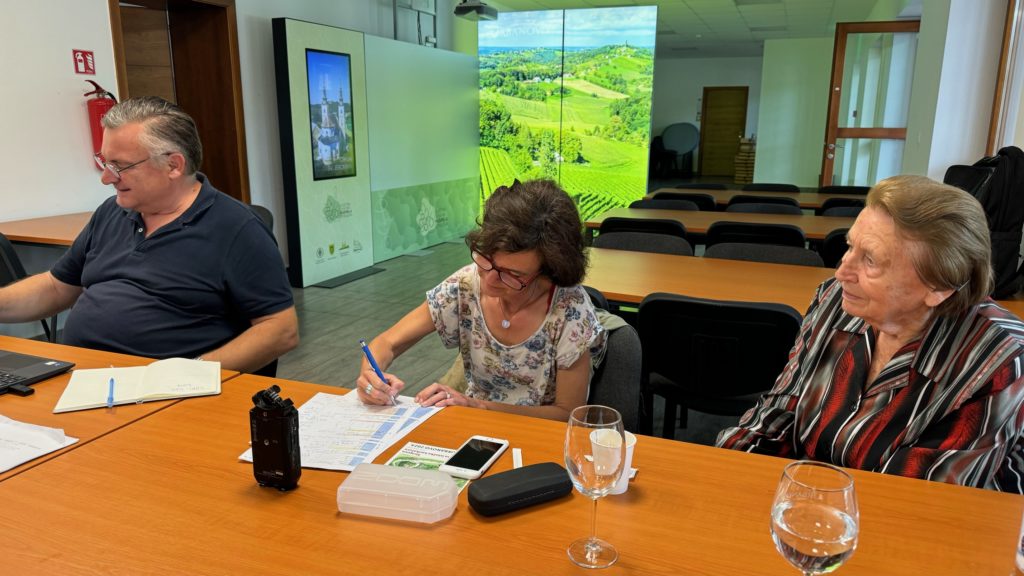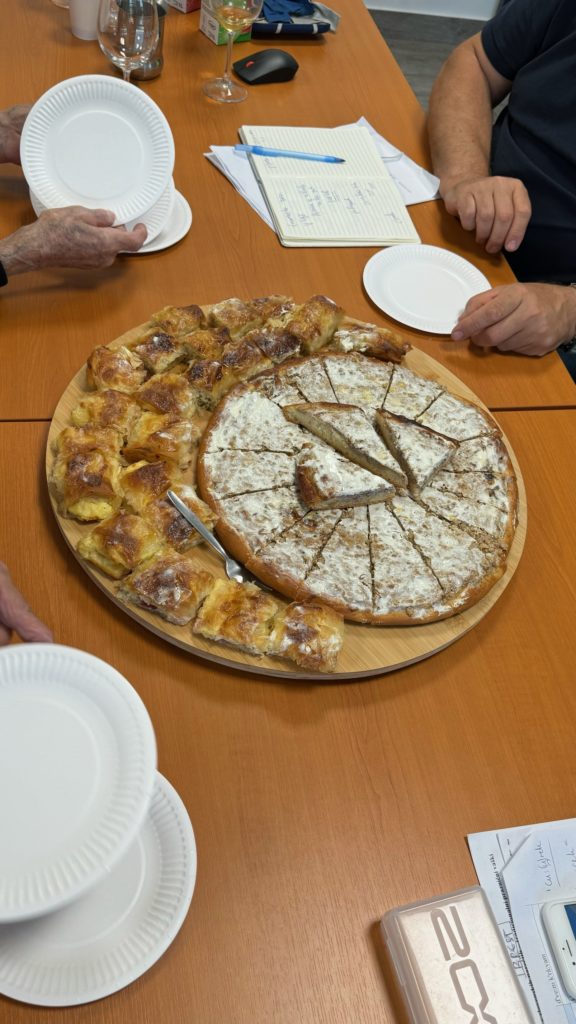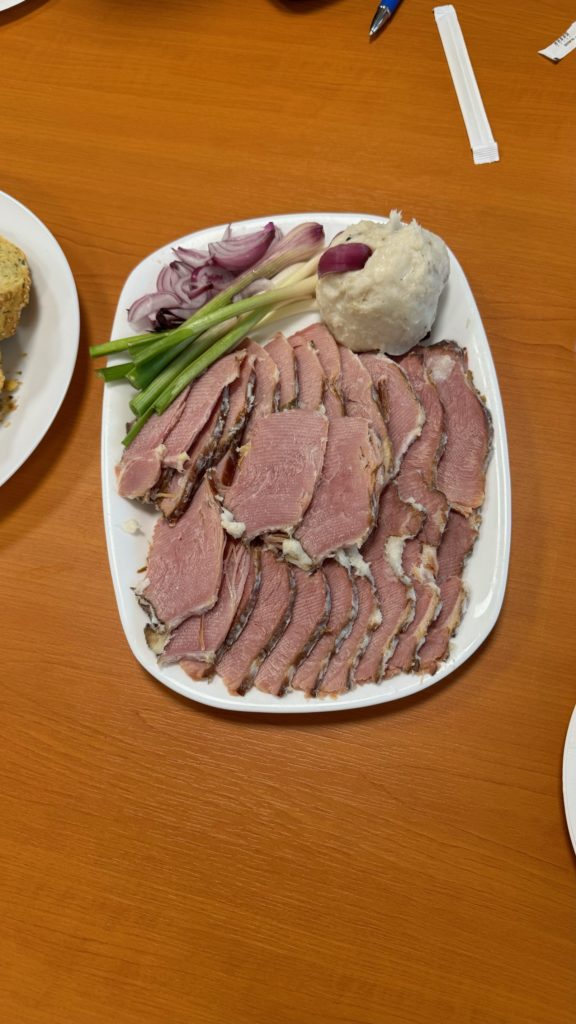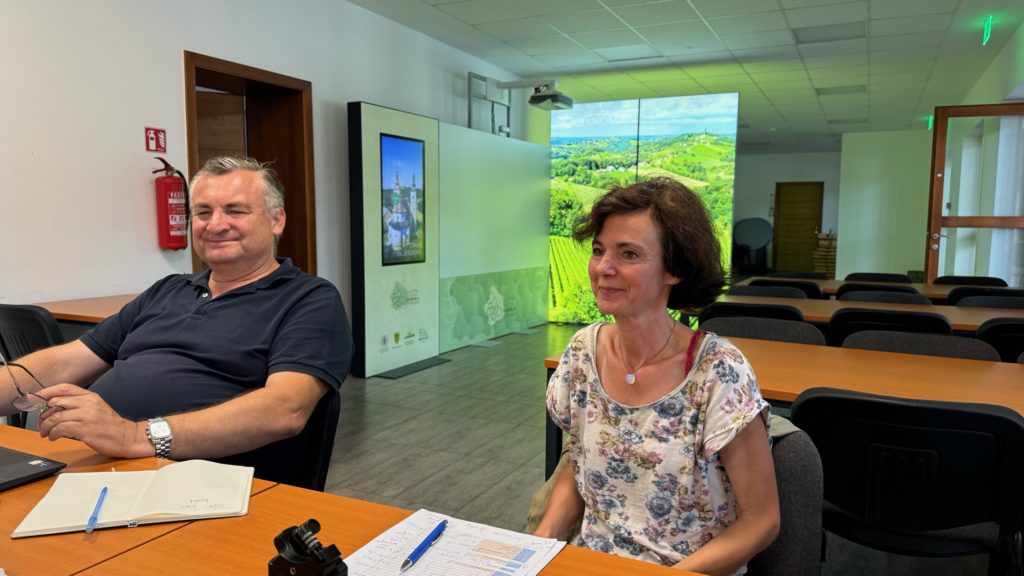Field Work in Štrigova, Croatia
During her three-month internship in Croatia (University of Zagreb, Faculty of Humanities and Social Sciences), Dr Tjaša Jakop from the Fran Ramovš Institute of the Slovenian Language conducted field research in Štrigova, Croatia, in June 2024. She was also supported by dialectologist Dr Đuro Blažeka from Zagreb. Both were warmly welcomed by Mr Stanislav Rebernik, the mayor of Štrigova.
Đuro Blažeka is a Croatian linguist, lexicographer and expert on Kaikavian who works at the Faculty of Education in Zagreb. He and Mr Dragutin Lovrenčić are finalising the collection of words and editing the material for the dictionary of Štrigova (and its surroundings), which Dragutin Lovrenčić has been collecting for more than two decades.
Blažeka classifies the language of Štrigova and its surroundings as a subdialect of Upper Međimurje. Đuro Blažeka divides the Međimurje dialect into 3 subdialects: (1) the lower subdialect, (2) the middle subdialect and (3) the upper subdialect (upper subdialect) – the latter is represented by the Sveti Martin, Štrigova and Staninec language groups. Blažeka writes (2007: 151 and 162–163) that the upper subdialect is most closely related to the neighbouring Slovene languages and has the most in common with the neighbouring (prleško) dialect compared to the other two subdialects of Međimurje. The excellent organisation was provided by: Dragutin Lovrenčić, Stanislav Rebernik (mayor), Josip Mikec (tourism officer) and Danica Rojko, who treated everyone present to home-made delicacies (meso iz tiblice and zabil ‘pork meat and minced lard’, štrukli and krapci). The informants (there were four of them) were born between 1931 and 1956 and answered all questions very actively and precisely.
Tjaša Jakop, a dialectologist from Ljubljana, was impressed by the richness of the vocabulary of the dialect and noted that the speakers still retain some dual forms, e.g. in the pronouns: míja or míjadva ‘we both’, jédva ‘they both’, they stay dúma ‘at home’ and they go dimú ‘home’. The girl is púca and wears jêjnka ‘skirt’, and the boy is pêb and wears réklec ‘jacket’.
The locals are not only proud of their local dialect, but also of their food, their wine, the beautiful landscape full of vineyards and the recently built lookout tower called Mađerkin breg (‘The Hill of the Hungarian Woman’). The informants told the story behind this name: A former ballerina immigrated to this area from Hungary. Emilija (married Krauthaker) married a local man and after the end of the Second World War her husband was killed as a Hungarian soldier. The widow, who did not know the local customs, traditions and language, earned her living in old age by selling the eggs of her chickens. Each chicken had a name and the old lady wrote the name of the chicken that had laid it on each egg. She died in poverty and her grave can no longer be found. In the place where she lived, there is a new and modern lookout tower that bears her name (as the locals called her: Hungarian Woman) and is visited by many tourists. Thus, the tragic life story of the ballerina from Budapest remained in the memory of the local people and became part of the tourist attraction in Međimurje region.
All three collectors enjoyed working with dialect speakers. They collected a large amount of valuable dialect material and promised to continue working together in the future. The atmosphere is conveyed by the photos provided by Dragutin Lovrenčić.
Literature:
Blažeka, Đuro. 2007. Odnos međimurskog dijalekta i susjednih slovenskih dijalekata. Radovi Zavoda za znanstveni rad HAZU Varaždin, 18, Zagreb – Varaždin, 151–166.





